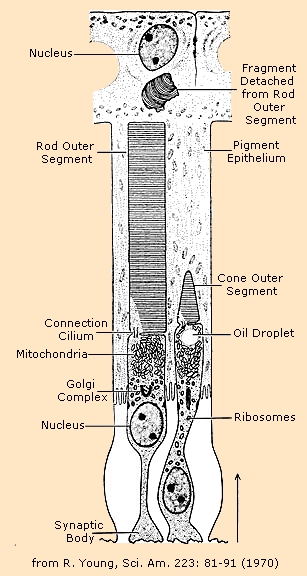rod cell

Comparison of a rod cell (left) and cone cell.
A rod cell is a type of light-sensitive nerve cell found in the vertebrate retina. Rods do not discriminate fine detail or color differences, but they are sensitive to very dim light, which cones are not. Whereas tens or hundreds of photons are needed to activate a cone, a single photon is all it takes to produce a response from a rod cell. Because of this sensitivity, rods are responsible for night vision. Loss of them result in the condition known as night blindness.
The rod-shaped outer segment of a rod cell, which is the light-sensitive part, consists largely of a stack of flat and parallel unit membranes, at right angles to the cell length. This develops embryologically from a cilium, and retains its characteristic 9+2 pattern of fibrils. The response to light depends on the pigment rhodopsin, also known as visual purple.
There are about 120 million rods in one retina of a human eye – about 20 times the number of cones. Rods, however, are not found at all in the fovea.


